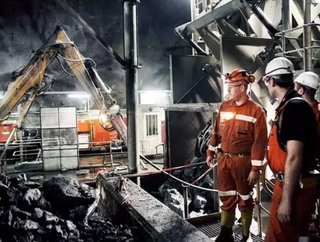Improving Underground Communications with Mining Sensor Data

Necessity is the mother of invention.
This is what then-Chief Operating Officer of Dundee Precious Metals, Rick Howes, realized back in 2009 when the financial crisis threatened to derail plans to double production of copper and gold at a mine in Chelopech, Bulgaria. There was no going back on the $150 million already invested in Chelopech, so he had to find a more efficient way to operate the facility.
So he completely revamped the underground communication system.
The technologies key to Howes’ success were sensors and other Internet connected devices. According to the Wall Street Journal, “Some 4.9 billion connected devices, including vehicles, vending machines and industrial equipment, will be in use in 2015, up 30% from 2014, market research firm Gartner Inc. says. It predicts that by 2020, 25 billion devices will be in use and costs of processing, sensing, and communications semiconductors will have fallen by 35%.
• Rio Tinto: Mine of the Future
• How-To: Protect your Technology, R&D and Innovation
This technology allowed Howes to create an underground digital tracking system by outfitting miners and machinery with Internet-enabled sensors. Specifically, Howes used Radio Frequency Identification (RFID) sensors, Wi-Fi networks, fiber-optic cables, and military-grade communications devices.
According to the Wall Street Journal: “Dundee’s digital tracking network locates the approximate position of each wireless RFID tag, based on the signal strengths to the closest underground wireless access points. The software superimposes the locations on a 3-D map. The control room supervisor can intervene quickly when assigned tasks are deviating from expectations.”
Howes’ tracking system allowed for more efficient management of machines and people. It made it possible to identify miners who needed to be evacuated during blasting and to learn when machines needed maintenance prior to breaking down.
Howes’ gamble on technology worked. According to the company, from 2010 to 2013, Dundee doubled ore production from one million tons to more than two million tons. Mining interests with deeper mines than Chelopech have taken an interest in Howes’ innovations.
- Dundee Precious Metals acquires INV MetalsSupply Chain & Operations
- Swedish Epiroc unveils new generation of battery powered underground mining machinesTechnology
- Emesent commercializes first underground drone technology for mine mappingTechnology
- Barminco awarded A$335mn mining services contract for Gold Fields Agnew gold mineAutomation & AI






